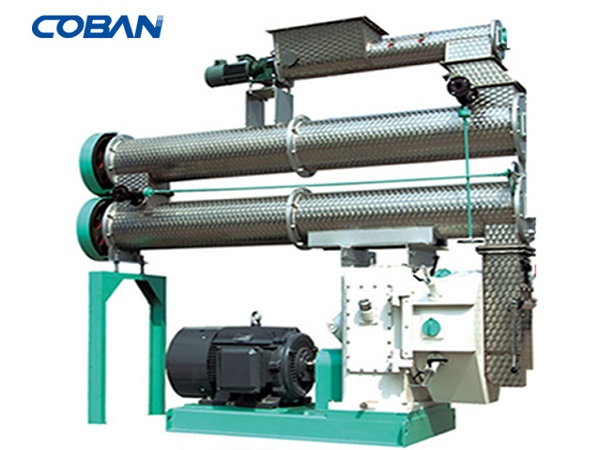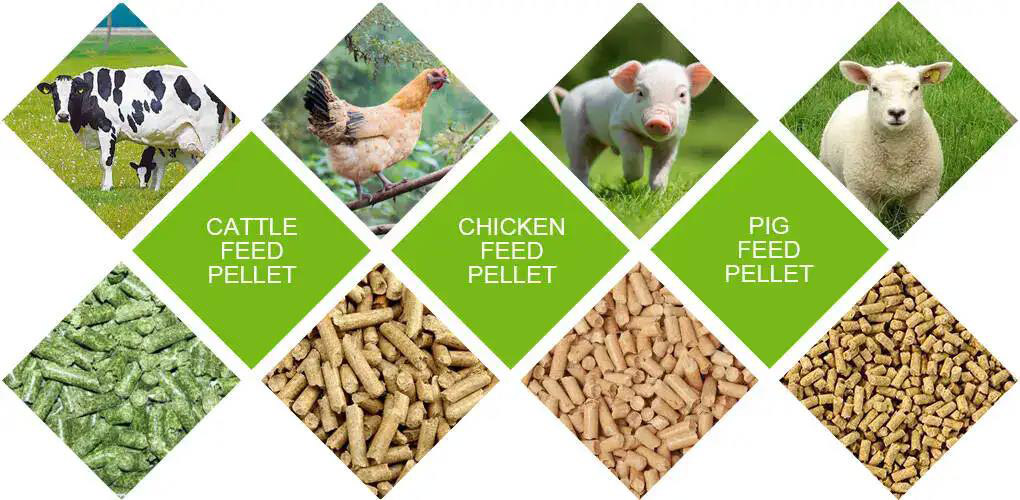feed mill machinery
Feed mill machinery is equipment used to grind raw materials (such as grains, legumes, feed ingredients, etc.) into powder or pellets. These machines are commonly employed in agriculture and animal husbandry for producing animal feed.
feed mill machinery Introduction
Feed mill machinery is equipment used to grind raw materials (such as grains, legumes, feed ingredients, etc.) into powder or pellets. These machines are commonly employed in agriculture and animal husbandry for producing animal feed. They come in different types and sizes and can be adjusted according to requirements to produce feed of varying specifications and qualities. Playing a crucial role in feed processing, they enhance the digestibility and nutritional value of feed, thereby promoting the healthy growth of livestock and poultry.


Characteristics of feed mill machinery
High grinding efficiency
capable of rapidly grinding raw materials into the desired powder or pellets, improving production efficiency.
Adjustable functionality
equipped with adjustable functions to modify the particle size and shape of the grinding according to requirements.
Versatility
suitable for grinding various types of materials such as grains, legumes, and feed ingredients.
High precision
able to precisely control the grinding process to ensure the quality and uniformity of the output materials.
Energy-saving and environmentally friendly
possessing energy-saving and environmentally friendly characteristics, reducing energy consumption and environmental impact.
Easy operation
simple operation, easy maintenance, and cleaning, enhancing equipment availability and stability.
Safety and reliability
equipped with safety protection devices to ensure the safety of operators and equipment.
High automation
some models have high automation capabilities, enabling automated production to improve production efficiency and product quality.


The structure of feed mill machinery
Feeding device
used to convey raw materials into the feed milling machinery to initiate the milling process.
Grinding device
includes components such as grinding discs and wheels, utilized to grind raw materials into powder or pellets.
Transmission device
transfers power to drive the grinding device for operation.
Separation device
separates the ground powder or pellets from the unground raw materials.
Discharging device
ejects the milled finished materials from the feed milling machinery for further processing or packaging.
Control system
regulates the operation of the feed milling machinery, adjusting parameters of the milling process to ensure stability and efficiency in production.


Advantages of feed mill machinery
High processing efficiency
capable of quickly grinding raw materials into the desired powder or pellets, thereby enhancing production efficiency.
Precise control
equipped with precise processing parameter adjustment functions, allowing for control over the particle size, shape, and quality of the product.
Versatility
suitable for various types of raw materials such as grains, legumes, and feed ingredients, increasing the equipment’s versatility.
High-quality output
products processed by feed milling machinery typically exhibit uniform particle size and good quality.
Cost-saving
saves labor and time costs, thereby improving production efficiency.
Energy-saving and environmentally friendly
adopts advanced processing technology and equipment design, reducing energy consumption and environmental pollution.
Increased feed utilization
processed feed is more easily digested and absorbed by animals, thereby increasing feed utilization.
High level of automation
some models feature automated operation functions, reducing operational complexity and improving production efficiency.
Application of feed mill machinery
Typically, the production of feed mill machinery uses raw materials such as corn, soybeans, wheat, and other nutrients as the formula. Our feed mill machinery are specially used to produce feed for poultry, livestock, pigs, horses, cattle, sheep, chickens, ducks, goose and other animals.For different animals, with different growth cycles, (chicks, suckling pigs, calves, etc.), the feed pellet size required is different, but our feed production line only needs to replace ring molds with different apertures or use a pellet crumbler to reach the required size.

Parameter of feed mill machinery
| Model | Capacity | Main Motor Power | Feeder Motor Power | Conditioner Power | Dia. of Ring Die | Pellet Size |
| SZLH250 | 1-2T/H | 22KW | 0.75kw | 1.5kw | 250mm | 2-12mm |
| SZLH320 | 3-4T/H | 37KW | 1.5kw | 2.2kw | 320mm | 2-12mm |
| SZLH350 | 5-7T/H | 55KW | 1.5kw | 3kw | 350mm | 2-12mm |
| SZLH420 | 8-12T/H | 110KW | 1.5kw | 7.5kw | 420mm | 2-12mm |
| SZLH508 | 10-18T/H | 160KW | 2.2kw | 11kw | 508mm | 2-12mm |
| SZLH558 | 15-25T/H | 180KW | 2.2kw | 11kw | 558mm | 2-12mm |
| SZLH678 | 20-30T/H | 220KW | 2.2kw | 11kw | 678mm | 2-12mm |
| SZLH768 | 25-42T/H | 280KW | 2.2kw | 11kw | 768mm | 2-12mm |







